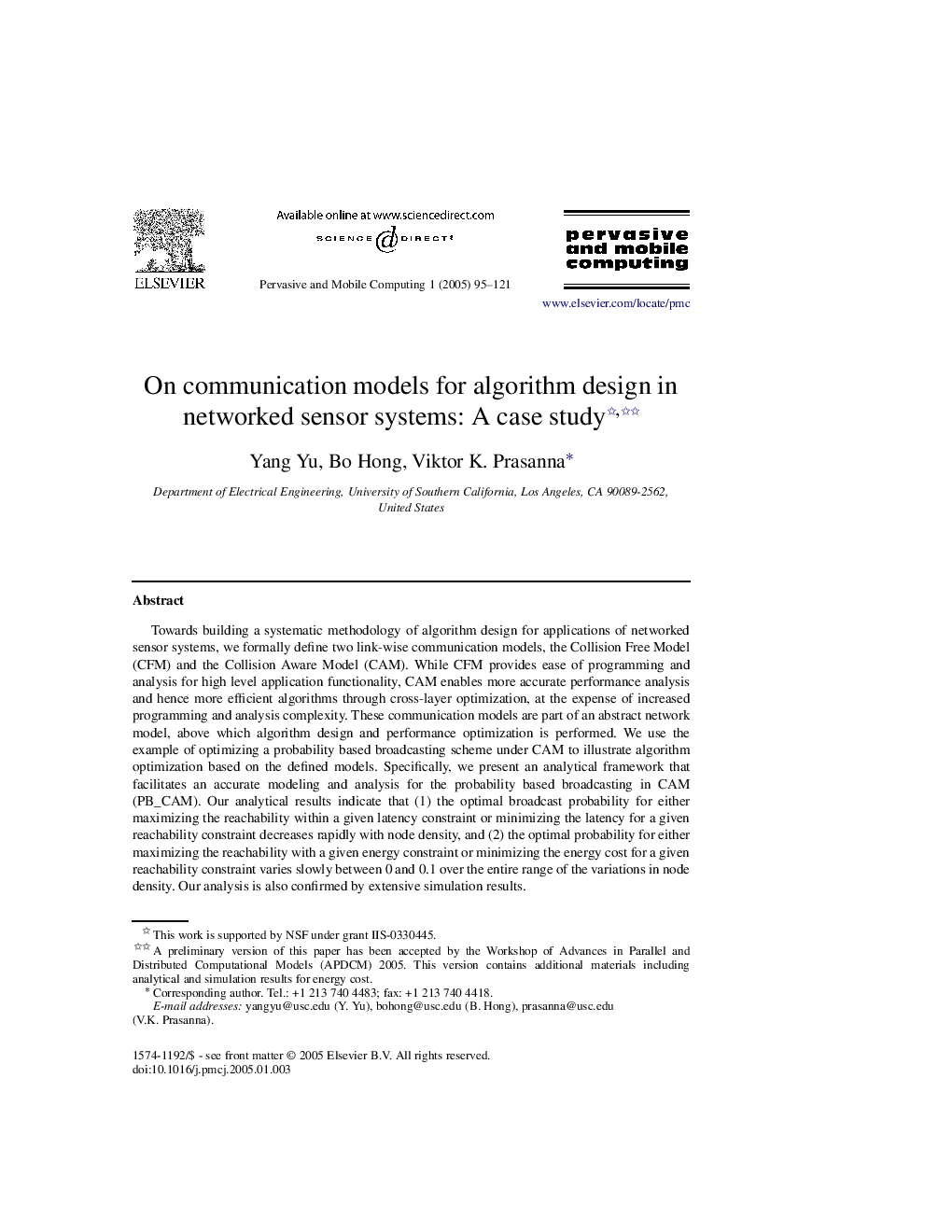| Article ID | Journal | Published Year | Pages | File Type |
|---|---|---|---|---|
| 10344570 | Pervasive and Mobile Computing | 2005 | 27 Pages |
Abstract
Towards building a systematic methodology of algorithm design for applications of networked sensor systems, we formally define two link-wise communication models, the Collision Free Model (CFM) and the Collision Aware Model (CAM). While CFM provides ease of programming and analysis for high level application functionality, CAM enables more accurate performance analysis and hence more efficient algorithms through cross-layer optimization, at the expense of increased programming and analysis complexity. These communication models are part of an abstract network model, above which algorithm design and performance optimization is performed. We use the example of optimizing a probability based broadcasting scheme under CAM to illustrate algorithm optimization based on the defined models. Specifically, we present an analytical framework that facilitates an accurate modeling and analysis for the probability based broadcasting in CAM (PB_CAM). Our analytical results indicate that (1) the optimal broadcast probability for either maximizing the reachability within a given latency constraint or minimizing the latency for a given reachability constraint decreases rapidly with node density, and (2) the optimal probability for either maximizing the reachability with a given energy constraint or minimizing the energy cost for a given reachability constraint varies slowly between 0 and 0.1 over the entire range of the variations in node density. Our analysis is also confirmed by extensive simulation results.
Keywords
Related Topics
Physical Sciences and Engineering
Computer Science
Computer Networks and Communications
Authors
Yang Yu, Bo Hong, Viktor K. Prasanna,
